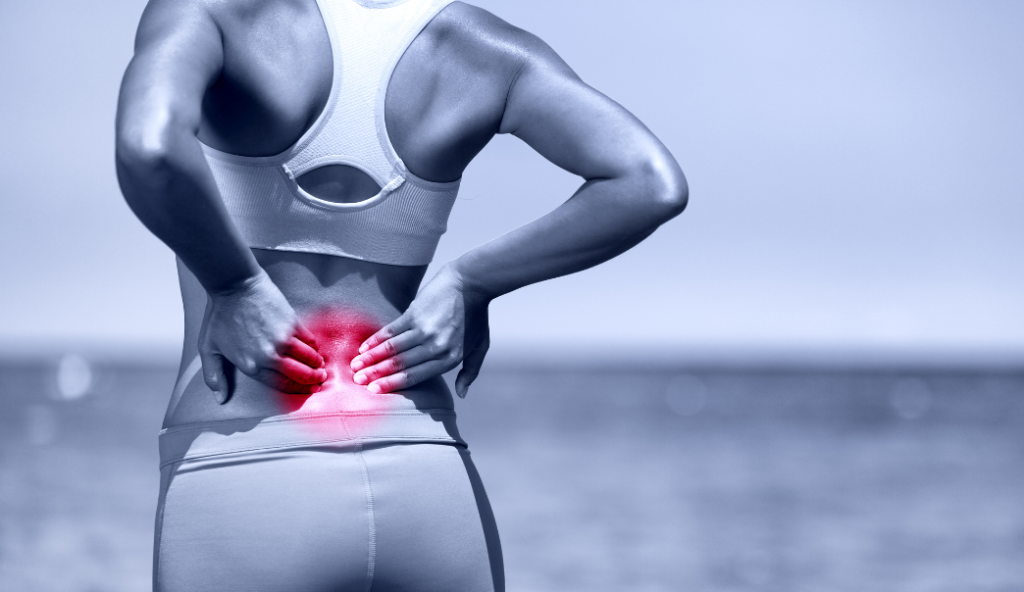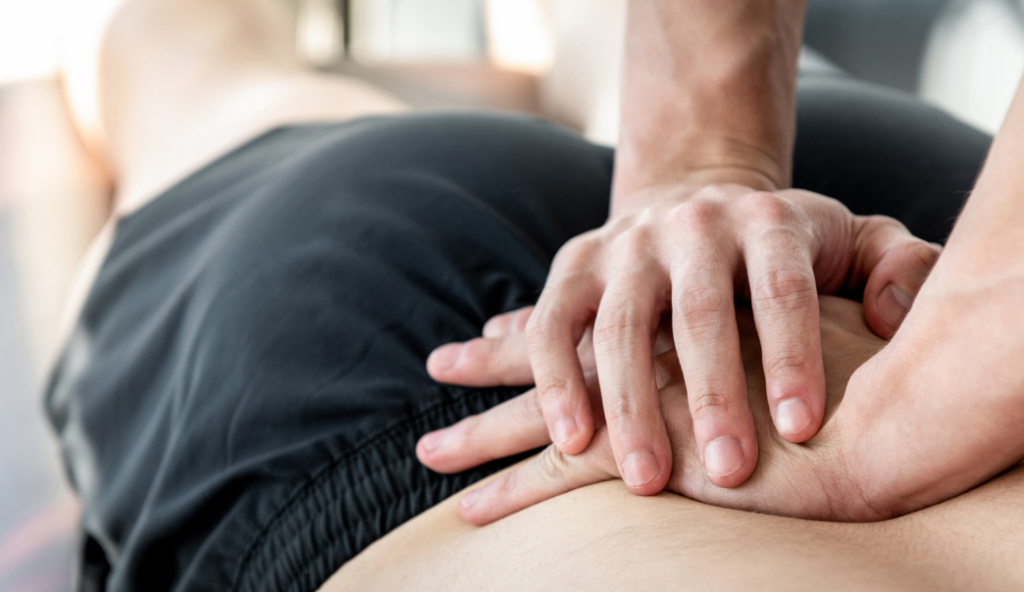Athletes often experience lower back pain, greatly impacting their performance and overall well-being. However, there are effective strategies and solutions to alleviate and prevent this discomfort. By understanding the common causes of lower back pain in athletes and implementing tailored stretching and strengthening routines, athletes can improve their back health and avoid future injuries.
Common Causes of Lower Back Pain in Athletes
Lower back pain in athletes can stem from various factors, including muscle imbalances, poor posture, overuse, or sudden movements during training or competition. Additionally, inadequate warm-ups, insufficient rest and recovery, and improper exercise techniques can contribute to this issue.
Extended durations of sitting
Sitting for long periods, such as during travel or desk work, can also exacerbate lower back pain in athletes. The repetitive impact and stress on the back during athletic activities, such as running or weightlifting, can lead to strain and discomfort.
One common cause of lower back pain in athletes is muscle imbalances. When specific muscles are stronger or tighter than others, it can create an imbalance that strains the lower back. For example, if the muscles in the front of the hips are fast and the muscles in the lower back are weak, it can lead to excessive curvature of the spine and lower back pain.
Poor posture is another contributing factor to lower back pain in athletes. When an athlete consistently maintains a slouched or hunched posture, it can put unnecessary stress on the muscles and ligaments of the lower back. This can lead to chronic pain and discomfort, especially during physical activity.
Overuse of muscles
Overuse is common among athletes, as they often push their bodies to the limit to excel in their sport. However, excessive repetition of certain movements or exercises can strain the muscles and ligaments of the lower back, leading to pain and injury. Athletes must listen to their bodies and allow proper rest and recovery to prevent overuse injuries.
Sudden movements during training or competition
In addition to overuse, sudden movements during training or competition can contribute to lower back pain. Athletes who engage in activities that require quick and explosive movements, such as jumping or twisting, are at a higher risk of experiencing lower back pain. These sudden movements can stress the muscles and ligaments of the lower back, leading to pain and discomfort.
Inadequate Warm Ups
Furthermore, inadequate warm-ups before physical activity can increase athletes’ risk of lower back pain. Warm-ups are essential for preparing the body for exercise by increasing blood flow to the muscles and improving flexibility. Without proper warm-ups, the lower back muscles may not be adequately prepared for the demands of physical activity, increasing the likelihood of pain and injury.
Improper exercise technique is another factor contributing to lower back pain in athletes. Exercises with incorrect form or technique can place unnecessary stress on the muscles and ligaments of the lower back. This can lead to pain and discomfort and in some cases, more serious injuries.
Too Much Desk Work or Travel
Sitting for long periods, such as during travel or desk work, can also exacerbate lower back pain in athletes. Prolonged sitting can lead to tightness and stiffness in the lower back muscles and poor posture. This can contribute to the development of chronic lower back pain in athletes.
Athletes must address lower back pain effectively by identifying the underlying causes specific to their situation and customizing their treatment accordingly. This may involve working with a physical therapist or sports medicine specialist to develop a comprehensive treatment plan that includes exercises to correct muscle imbalances, improve posture, and strengthen the lower back muscles.
Additionally, athletes may need to modify their training or competition routines to allow for proper rest and recovery and ensure they use proper technique during exercises to minimize the risk of further injury.

Tailored Stretching and Strengthening Routines
Stretching and strengthening exercises are essential in alleviating and preventing lower back pain in athletes. A combination of flexibility exercises, targeted stretches, and core maintenance routines can help improve muscle imbalances, enhance stability, and relieve tension in the lower back.
Lower back pain is common among athletes, especially those involved in activities that require repetitive movements or strain the back muscles. It can hinder performance and lead to long-term discomfort if not appropriately addressed. That’s why incorporating tailored stretching and strengthening exercises into a daily routine is crucial for athletes looking to maintain a healthy lower back.
Effective Stretches for Lower Back Pain
Athletes can incorporate the cat-cow stretch, child’s pose, and seated forward bend into their routine to improve flexibility and reduce lower back pain. These stretches target the muscles in and around the lower back, promoting a greater range of motion and alleviating discomfort.
The cat-cow stretch involves getting on all fours and alternately arching and rounding the back, mimicking the movements of a cat and a cow. This stretch helps to loosen up the muscles in the lower back and increase flexibility. The child’s pose, on the other hand, involves sitting on the heels with the knees spread apart and bending forward to touch the forehead to the ground. This stretch stretches the lower back and provides a gentle stretch to the hips and thighs.
Another effective stretch for lower back pain is the seated forward bend. This stretch involves sitting on the floor with the legs extended in front and reaching forward to touch the toes. It helps to stretch the hamstrings, lower back, and calves, promoting flexibility and relieving tension in the lower back.
Core Strengthening Exercises
Building a strong core is crucial for athletes in maintaining a healthy lower back. The core muscles, including the abdominal muscles, obliques, and back muscles, provide stability and support to the spine. By strengthening these muscles, athletes can decrease the risk of lower back injuries and improve their overall performance.
Planks are an excellent core strengthening exercise targeting the abdominal, back, and glutes. To perform a plank, athletes should start in a push-up position and hold the body straight, engaging the core muscles. Russian twists are another effective exercise that targets the obliques. Athletes can sit on the floor with their knees bent, lean back slightly, and twist the torso from side to side, touching the floor on each side. This exercise helps strengthen the core’s side muscles, providing stability to the lower back.
Bird dogs are also beneficial for strengthening the core and lower back muscles. Athletes start on all fours and extend one arm forward while extending the opposite leg backward. This exercise engages the core muscles and promotes stability in the lower back.
Implementing these tailored stretching and strengthening exercises into daily routines can help athletes proactively manage and eliminate lower back pain. By improving flexibility, targeting specific muscle groups, and strengthening the core, athletes can enhance their performance and reduce the risk of injuries. Consult a healthcare professional or qualified trainer for proper exercise form and technique.
Chiropractic Solutions for Athletic Lower Back Pain
In addition to stretches and exercises, seeking chiropractic care can provide athletes with effective solutions for lower back pain. Chiropractors specialize in identifying and correcting musculoskeletal imbalances and misalignments that can cause discomfort and hinder performance.
Maintaining a healthy spine
When it comes to athletic performance, a healthy spine is crucial. The spine supports the body’s weight and protects the spinal cord, which is responsible for transmitting signals between the brain and the rest of the body. Misalignment or imbalance in the spine can disrupt this communication, leading to pain, decreased range of motion, and reduced athletic performance.
Through manual adjustments, chiropractors can restore proper alignment to the spine, relieving pressure on nerves, reducing inflammation, and promoting optimal function. These adjustments involve applying controlled force to specific joints, helping to realign them and restore their normal range of motion. So, chiropractors can alleviate lower back pain and improve overall athletic performance.
Regular Massage Therapy
Moreover, chiropractors may also recommend complementary therapies such as massage, acupuncture, or cold laser therapy to enhance the healing process further. Massage therapy, for instance, can help relax tight muscles, increase blood flow, and reduce inflammation. Acupuncture, conversely, involves inserting thin needles into specific points on the body to stimulate the release of endorphins, which are natural painkillers. Cold laser therapy utilizes low-level laser light to reduce pain and inflammation, accelerate tissue repair, and promote healing.
Regular chiropractic visits can help athletes maintain a healthy spine, prevent future injuries, and optimize their athletic performance. Chiropractors provide immediate relief from lower back pain and focus on long-term solutions by addressing the root cause of the problem. By improving spinal alignment and overall musculoskeletal function, athletes can experience improved flexibility, increased strength, and enhanced performance in their respective sports.
It is important to note that chiropractic care is not only for athletes currently experiencing lower back pain but also for those who want to prevent future injuries. Regular chiropractic adjustments can help identify and correct minor imbalances before they become more serious. By maintaining a healthy spine, athletes can reduce their risk of injury and perform at their best.

Preventive Strategies to Avoid Lower Back Injuries
Prevention is key when it comes to lower back pain. Athletes can incorporate strategies into their training and lifestyle to reduce the risk of lower back injuries and pain.
Firstly, it is essential to maintain proper posture during all activities, including sitting, walking, and exercising. Regular strengthening exercises for the core and back muscles can promote proper alignment and stability.
Additionally, athletes should gradually increase the intensity and duration of their workouts, allowing their bodies to adapt and strengthen over time. Implementing a thorough warm-up routine before any physical activity can also prepare the body for optimal performance and reduce the risk of injury.
Furthermore, athletes should listen to their bodies and promptly address any signs of discomfort. Ignoring minor pain can lead to more significant problems down the line. Regular rest, recovery, and adequate sleep and nutrition are crucial in maintaining overall health and preventing lower back injuries.
Recovery and Rehabilitation Tips for Athlete Back Health
Recovery and rehabilitation are vital components of maintaining athlete back health and preventing further injury. Athletes can employ various techniques to facilitate healing and support their overall well-being.
Low-intensity exercises like swimming or yoga promote blood flow and reduce muscle tension in the lower back, known as active recovery. Try ice or heat therapy, foam rollers, or professional massage for faster recovery.
Adequate rest and sleep are equally important for the body to repair and rejuvenate. Athletes should set aside dedicated time for recovery and prioritize self-care to ensure optimal back health.
Athletes can combat and prevent lower back pain by addressing the common causes, implementing tailored stretching and strengthening routines, seeking chiropractic care, adopting preventive strategies, and prioritizing recovery. By taking proactive steps to improve their back health, athletes can minimize discomfort, enhance their performance, and enjoy their athletic pursuits to the fullest extent.



